#I switched from cell and molecular biology to ecology and evolutionary biology
Explore tagged Tumblr posts
Text
This is my first job where I have a living wage (not survivable, living!!!) and, setting aside my feelings of it not being in my field / something I’m super passionate about, I’m quite content!
That being said (and this isn’t a real complaint), part of me is miffed because this is the original field I went to school for but switched within 6 months and got in a huge argument with my parents about. Like I love them and know they’re happy for me, but also I knowwww my mom has made some sort of smug comment to other family members about me being back in medical research “where I always should have been”
#I switched from cell and molecular biology to ecology and evolutionary biology#and it turned into a whoooole thing where it became clear just how bullshit their “we support your choices as long as you’re happy” lie was#it was also right after I accidentally outed myself#so when I say tensions were high I mean Godzilla giving King Kong a piggy back ride could’ve limboed under those tensions easy peasy#my previous job was just taking care of lab animals#and I know she was telling fam that I was helping with cancer and cystic fibrosis research#which is technically true. but I know she was making it sound like I did the research (I did not)#so now she can honestly say I’m doing glaucoma and Alzheimer’s research and I know she’s primping herself like a peacock during mating szn
0 notes
Text
Extremely Rapid Evolution of Cone Snail Toxins
By Tim Pearce
Cone snails live in the sea and inject venom to paralyze their prey. Most cone snails eat worms, some eat other snails, and some catch and eat fish. They use a hypodermic dart (a modified radular tooth) to inject venom. The venom contains about 100 different peptides (short proteins) that act as neurotoxins. Each of the 600 or so species of cone snail has its own unique cocktail of peptides, with very little overlap of peptides among species, yielding >50,000 peptides among the cone snails of the world.
Cone snail venom peptides are among the most rapidly evolving protein-coding genes in animals. They evolve twice as fast as most other known proteins. The rapid evolution appears to result from extensive gene duplications that provide abundant opportunities for natural selection during predator-prey interactions [1,2].
Furthermore, cone venom peptides are one of the most highly post-translationally modified classes of gene products known. That means the peptides undergo extensive modifications after being translated from DNA, including bromination, glycosylation, and amino acid epimerization (changing from L to D, like becoming their own mirror image) [3].
The venom cocktail targets particular kinds of prey; worm-eaters have a different suite of peptides than fish eaters. At different stages of development, they can express different genes. When very young, the fish eaters are too small to eat fish, so they eat worms, then switch to fish later. Their venom cocktail changes from worm toxins to fish toxins when they switch prey.

Textile cone (Conus textile), a sea snail with venom powerful enough to kill humans. Specimen CM 127704, photo by Tim Pearce.
Conus magus is one of the species whose diet shifts from worms to fish as it grows. In these diet-shifting species, the shape of the radular dart changes as well – those eating worms have unbarbed darts, while those eating fish have backward pointing barbs to help keep hold of the fish [2,4,5].
Animal nerve cells contain many kinds of ion channels, whose function aids in transmitting signals along the nerve. Each cone snail peptide can target a particular kind of ion channel. The complex mixture of peptides in cone snail venom blocks many ion channels and neuron receptors in prey species. Surprisingly, many cone snail peptides act on pain targets, but it is not clear what advantage the snail would derive from numbing the prey’s pain. However, pain-killing properties are one of the reasons that cone snail venoms are of great interest to pharmaceutical companies and at least one cone snail peptide is currently used as a pain-killer in humans.
Researchers can prospect for venom peptides in the DNA of cone snail tissue snips or from museum specimens. By prospecting in DNA, they can find genes for venom peptides that are not being expressed at that particular life stage [6]. Once a useful peptide is discovered and characterized, it can be manufactured (so it doesn’t need to be milked from the snail).
Cone snails can switch rapidly between toxins for predation or toxins for defense. The toxins used by the geography cone, Conus geographus for catching prey are mostly inactive on humans, but the toxins it uses for defense are paralytic peptides that block neuromuscular receptors. Conus geographus and Conus textile are the two cone snail species known to kill humans [7].
To see videos of cone snails catching and swallowing fish, type into your internet browser: “cone snail eating.”
In addition to their beauty and amazing prey capture abilities, cone snails are remarkable for the extremely rapid evolution of their toxins, some of which show promise as useful medicines.
Timothy A. Pearce, PhD, is the head of the mollusks section at Carnegie Museum of Natural History.
Museum employees are encouraged to blog about their unique experiences and knowledge gained from working at the museum.
Notes:
[1] Duda, T.F. & Palumbi, S.R. 1999. Molecular genetics of ecological diversification: Duplication and rapid evolution of toxin genes of the venomous gastropod Conus. Proceedings of the National Academy of Sciences, U.S.A., 96(12): 6820–6823.
[2] Chang, D.& Duda, T.F., Jr. 2016. Age-related association of venom gene expression and diet of predatory gastropods. BMC Evolutionary Biology, 16: 27.
[3] Buczek, O., Yoshikami, D., Bulaj, G., Jimenez, E.C. & Olivera, B.M. 2005. Posttranslational amino acid isomerization: a functionally important D-amino acid in an excitatory peptide. Journal of Biological Chemistry, 280: 4247-4253.
[4] Nybakken, J. & Perron, F. 1988. Ontogenetic change in the radula of Conus magus(Gastropoda). Marine Biology, 98(2): 239–242
[5] Nybakken, J. 1990. Ontogenetic change in the Conusradula, its form, distribution among the radula types, and significance in systematics and ecology. Malacologia, 32(1): 35-54.
[6] I suspect that post-translational effects (including introns and exons) would obscure the understanding of the final product of a peptide discovered by DNA prospecting.
[7]Dutertre, S., Jin, A.-H., Vetter, I., Hamilton, B., Sunagar, K., Lavergne, V., Dutertre, V., Fry, B.G., Antunes, A., Venter, D.J., Alewood, P.F. & Lewis, R.J. 2014. Evolution of separate predation- and defence-evoked venoms in carnivorous cone snails. Nature Communications, 5(3521): 1-9.
#carnegie museum of natural history#mollusca#neurotoxin#ontogenetic diet shift#peptides#post-translational modification#protein-coding genes#cone snail#rapid evolution#venom#mollusks
577 notes
·
View notes
Text
Aalto-Helsinki 2020 is here, come meet us!
The time has come for Aalto-Helsinki 2020 to finally take over the blog! Despite the COVID-19 situation, we have been busy with planning our project since February. We have brainstormed, read countless scientific articles, contacted experts and companies and had a lot of online meetings.
Now let us introduce ourselves:
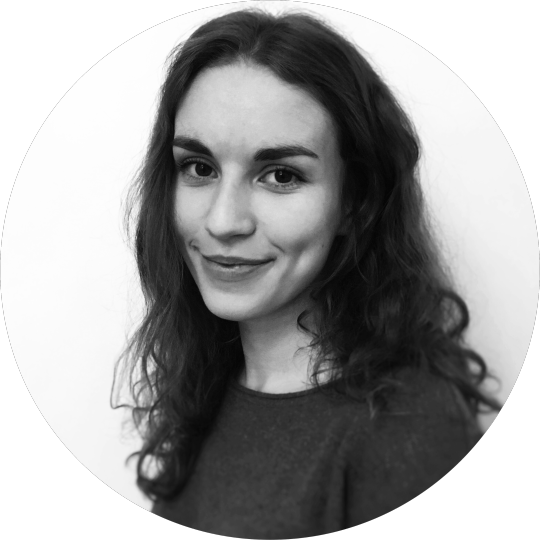
Tytti
I did my Bachelor's degree in Biotechnology and Chemical Engineering and decided to continue with Biotechnology to the Master’s studies. What fascinates me the most about biotechnology is that we can study and engineer the tiniest components of life and at the same time do industrial scale production with them. I applied to iGEM because I’m very interested in entrepreneurship and this project mimics all the different elements that are needed to develop a business. Apart from science, my favourite things in life are playing the guitar, spending time in nature and enjoying tea.
An adventurous trip you have been on? My most recent adventurous trip was to Norway because I had always wanted to visit the Arctic Ocean. There was this fishing boat where some Finnish guy had designed a sauna among other unusual things. After warming up in that sauna, I jumped from the deck to the ice-cold water. It was cool to actually experience the Arctic Ocean fully!
Your most extraordinary skill? Making perfectly thin “muurikka” crepes
What is your favourite board game? Pandemic, rising tide version.
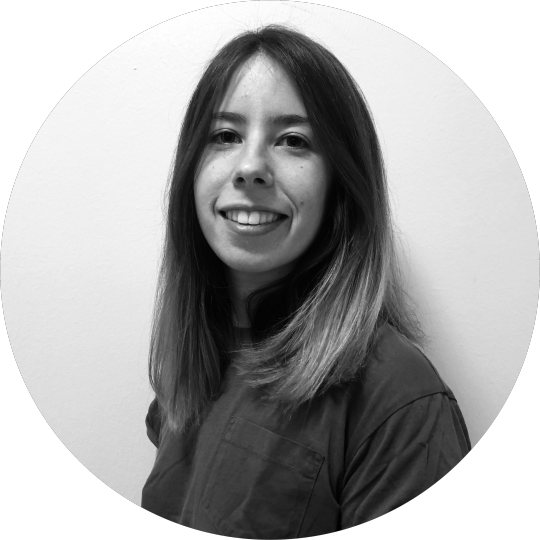
Carla
I am currently studying in the Ecology and Evolutionary Biology MSc program at the University of Helsinki. I completed my Bachelor’s degree in Genetics at Universitat Autònoma de Barcelona (UAB), in Barcelona, Spain. I have always been interested in Genetics and Evolution of organisms. I believe that a lot has still to be learnt about evolution mechanisms to make insights that can be applied to healthcare and medicine. In my free time I like to exercise, I am a bouldering enthusiast and I also try to go running as much as I can. I love watching movies as well. I applied to iGEM because it seemed the perfect opportunity to work with a multidisciplinary team and get to know people from different science fields. I consider myself an extroverted and curious person, so this could be the perfect opportunity to make new friends and learn from them. I thought it would also be the perfect opportunity to start a project on a topic of interest for all of us from scratch.
What is your favourite movie of all time? I don’t have a unique favorite movie, but my list of must watch movies is the following: Inception, Shutter Island, Green Book, The Good Will Hunting, The Shawshank Redemption, Jungle, Into the Wild, Mr. Nobody, Untouchable, Captain Fantastic, Interstellar, Donnie Darko, V for Vendetta and Dead Poets Society.
What kind of music do you listen to? I don’t only listen to one type of music, I like all types. Some international artists that I like are: Jonathan Wilson, John Frusciante, Steven Wilson, Eddie Vedder, Chet Faker, Gus Dapperton, Isaac Gracie, Billie Eilish, The Kooks, and Men I Trust among others. When talking about Catalan and Spanish music I usually listen to rumba, and rock, and also a bit of pop.
Your dream travel destination? My dream travel destinations would be: Iceland, Canada, Japan and Australia!
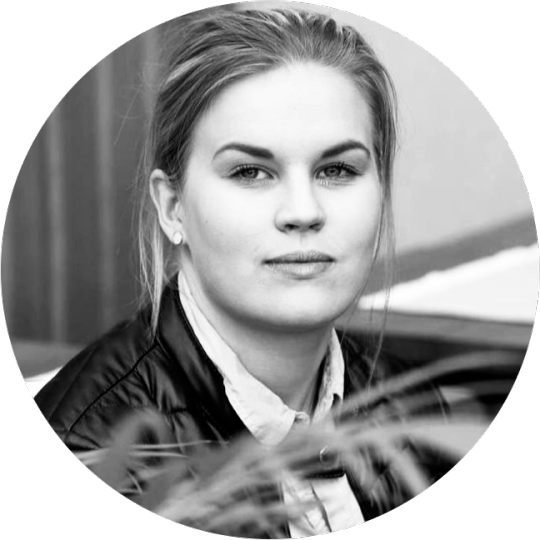
Amanda
I am studying at the Bachelor’s programme in Science in the chemistry study track at the University of Helsinki. In this year’s iGEM team I will work in the wet-lab but I am also involved with the funding, human practices and business. I applied to Aalto-Helsinki team to get the opportunity to take theory to practice and to learn a lot. In my free time I like cooking, baking, crocheting, knitting and gardening. I recently bought a greenhouse, where I will grow lots this summer!
What’s the most interesting or adventurous trip you have been on? Hard choice, but I would have to say the trip to Kenya with my family. So different and we saw a lot of animals and the whole Big Five!
What is your favourite board game now? And as a child? I think my favorite board game now is Dixit, but as a child I think it was Kimble.
Coffee or tea? Definitely tea, preferably green or white.
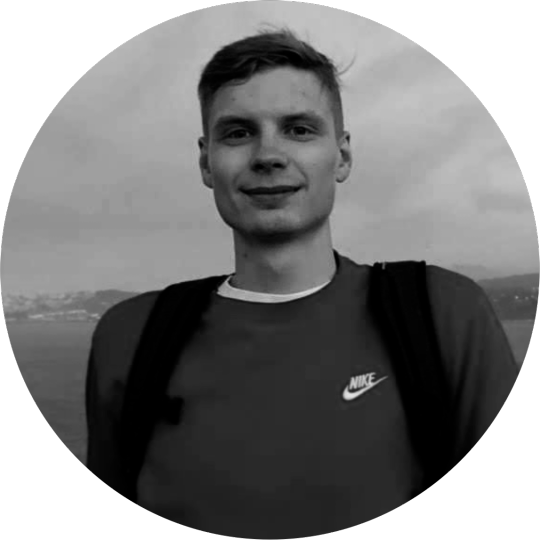
Artur
I study bioinformation technology at Aalto University. My minor is computer science. My role in our iGEM team is dry-lab and during the project I will be focusing on modelling as well as wiki development. I applied to iGEM because I wanted to be a part of a student driven team project and international competition. In my free time I enjoy programming, playing video games and going to the gym.
Your best tip to survive the quarantine? Outdoor activity, that does not require other people e.g. skateboarding and riding bicycle. Also playing video games with friends and watching tv series makes it easy.
What is your favourite movie of all time? Definitely Interstellar. After watching this for the third time I still get chicken skin. This almost three hour movie is a perfect combination of action, sci-fi and drama. Hans Zimmer did an astonishing job on music in this movie. I still keep one of the movie's soundtrack as my wake-up alarm. It's so good!
Who is your favourite scientist and why? Theoretical physicist Michio Kaku. I remember watching his show on Discovery Channel about black holes and teleportation. He got me interested in science and that's why he is my favourite scientist.

Daria
I am a second year master's student in Genetics and Molecular Biosciences, with focus on Molecular and Analytical Biosciences at the University of Helsinki. I have done my bachelor's in Biotechnology at the University of Silesia. I have experience in both environmental and biomedical research.
What was your favourite game to play as a child? Scavenger hunt. We lived right next to the forest, it felt good to be there for hours unsupervised.
What’s the grossest food you ever had to eat to be polite? Bananas. My culinary nemesis. Being grossed out by them is one of my earliest childhood memories.
What was the worst haircut you ever had? Bob at the age of 13. Thanks, mum.
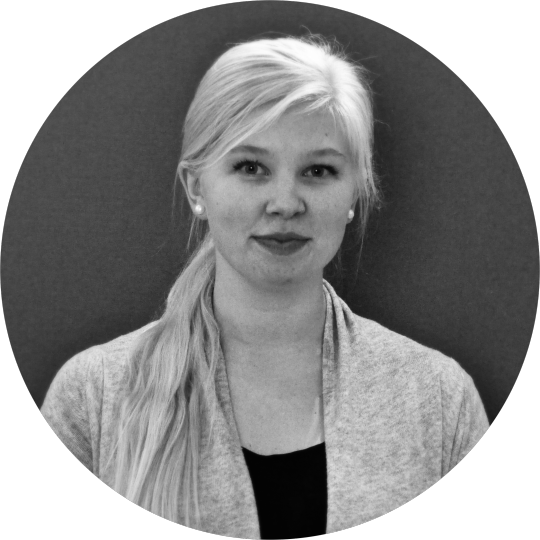
Emilia
I have a Bachelor’s degree in Biotechnology from Tampere University and I’m now continuing my MSc (Tech) studies at Aalto University School of Chemical Engineering, major in Biotechnology. In my free time, I work out at the gym and love to cook. Also, I enjoy being outside in nature and spending time with my family and friends. I applied to iGEM because of my passion for life sciences and interest in challenging myself. I wanted to be a part of a powerful team of young professionals who share the same goal to achieve something meaningful. iGEM is a unique opportunity to work in an interdisciplinary team and carry out a research project from start to finish. In this iGEM project, my main responsibility is working in the wet-lab and obtaining funding. I will also contribute to human outreach activities and updating the team’s social media. Furthermore, I hope to learn more about bioinformatics and modeling. I have some experience in biomedical research and I’m looking forward to expanding my knowledge in the field of synthetic biology during the iGEM project. In the future, I wish to work with innovations which would somehow improve the quality of life.
What is your favorite time of the day and why? I love quiet mornings. I want to enjoy my morning coffee in peace and start my day without rushing. On the other hand, I also love spectacular sunsets, especially during the summer in the Finnish archipelago.
Your dream travel destination? Iceland. I would love to get to experience its unique nature, geysers and hot springs.
Coffee or tea? Coffee, of course.

Gustav
I am currently finishing my first year of masters studies in biosystems and biomaterials engineering. I applied for iGEM since I have always been interested in cell mechanisms and the intriguing and complex principles behind these cellular-systems. In the Aalto-Helsinki team, I am primarily doing wet-lab and budgeting, which means that I’m currently mostly researching data and cell-mechanisms related to our project. I often find one hobby at a time for which I am very passionate until I get tired of it and eventually switch. Previous hobbies have included been sewing, chess and origami, but for the moment I most do horticulture.
What is your dream travel destination? I would love to see the Socotra Island and the strange species living there.
What makes you happy? A cup of good quality tea in the evening.
Cats or dogs? Both??

Julia
I study Molecular Bioscience at the University of Helsinki. My part in iGEM is mainly in the wet lab, but I also take part in social media and human practises. Outside of iGEM I enjoy reading and listening to music, as well as playing video games and D&D. I applied to iGEM because I wanted to do something different and concrete with my knowledge and skills. Besides molecular biology for the last year I’ve been studying Chinese and hope to be fluent in it one day.
Most interesting trip you have been on? A couple of years ago my friends and I went on a trip to Chongqing, China. The trip was very pleasant despite none of the locals knowing English, the hole in the outer wall of the room or there being no warm water for the first couple of days. One thing led to another and we somehow ended up as models for the hostel’s website, which meant a full-blown photoshoot with free drinks and food. Afterwards the hostel owner even treated us to delicious hot pot!
Also, the baby pandas were cute.
What is your favourite book of all time? The Invisible Library by Genevieve Cogman. The heroine of the story is refreshingly sensible, the plot innovative and the book builds an interesting world for the sequels. Would recommend to anyone who likes fantasy, paranormal, or is interested in librarians using spycraft to steal books from alternative worlds.
Coffee or tea? Most definitely tea. Jasmine tea is especially close to my heart.

Maria
I am a third-year physics student from the University of Helsinki, majoring in theoretical physics and minoring in computer science. My main motivation for applying to iGEM was to apply my science skills to a real-world problem. I’m also eager to learn how research projects work. In our project I will focus on modelling, human practices and social media. Besides science, I love languages, especially French. In my free time I enjoy ballet, board games, walks and reading.
What fictional world would you love to visit? With all the chaos in the world currently, I’d love nothing more than to escape to Moominvalley. Moominmamma’s pancakes and a worry-free life sound really appealing. I’d also like to visit Hogwarts, I have been waiting for my letter since I was 10.
What skill would you love to master? I’d love to master flying, imagine all the freedom it would bring! However, all my attempts so far have failed. I wonder why that is.
What is your favourite board game? Probably Battlestar Galactica or Dale of Merchants.

Nata
I study Biosystems and Biomaterials Engineering in the program of Life Science Technologies at Aalto University. I completed my Bachelor's degree in Biotechnology and Chemical Technology. In this journey of iGEM, I'm responsible for Human Practice activities and taking part in the wet-lab work as well. In my free time, when I'm not passionately studying life sciences or being fascinated by nature, I keep myself active with group gymnastics, friends and family. I applied to iGEM to be part of the fascinating project in the field of synthetic biology. I'm sure that we will learn precious skills of planning, team working and presenting as well as meet many wonderful people! Currently beside the iGEM, I'm working with seedlings of tomatoes and herbs that I will relocate in my glass house when it gets warmer.
Describe your dream job: In my dream job, I would be able to utilize the field of life sciences to help people and the environment at the same time.
Your best tip to survive the quarantine? Your favourite movie of all time?
My tip to survive this quarantine would be to spend time in nature and watch as many movies as possible. One of the movies should definitely be my all time favourite: The Intouchables.
0 notes